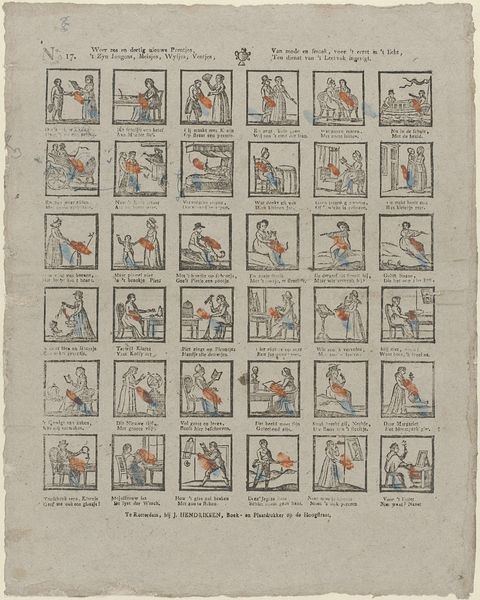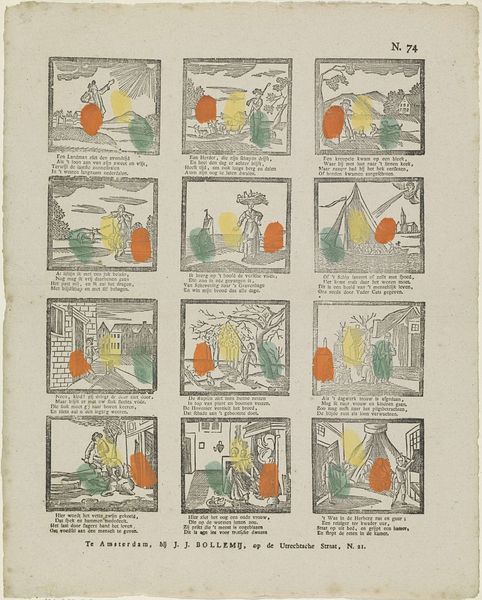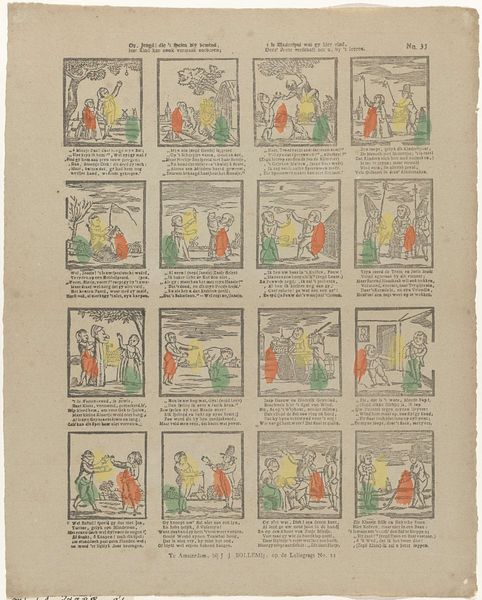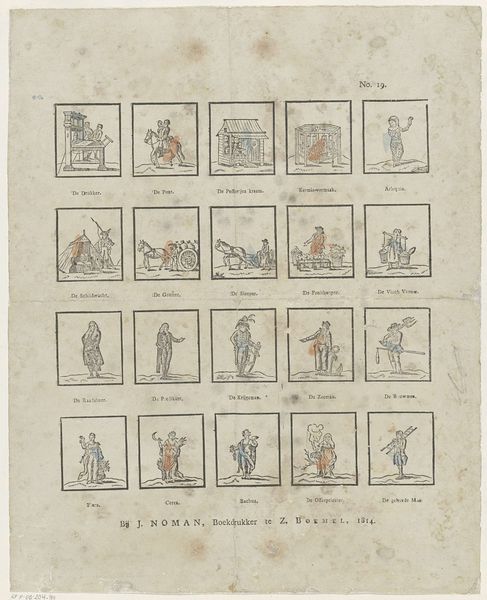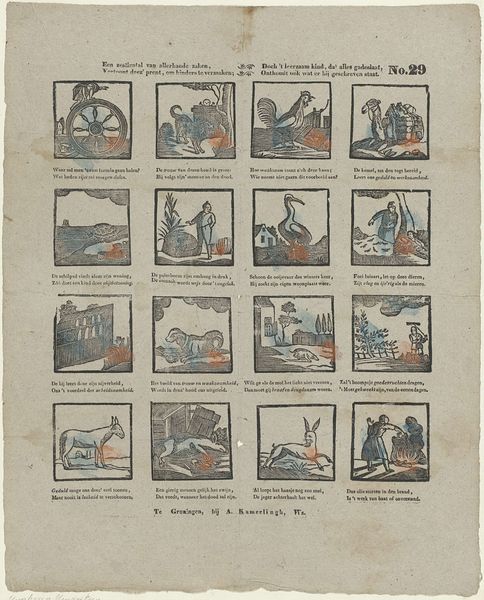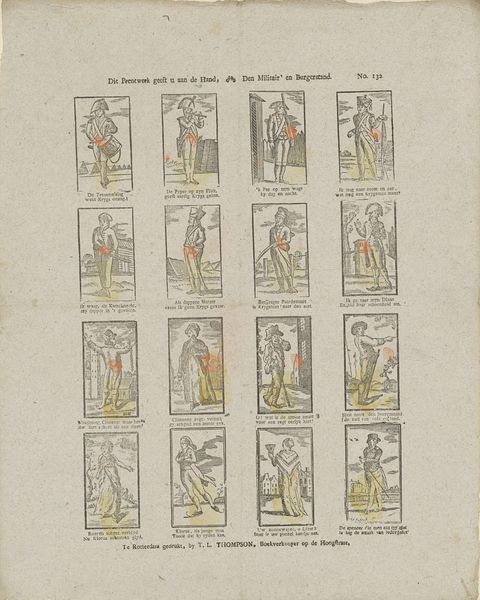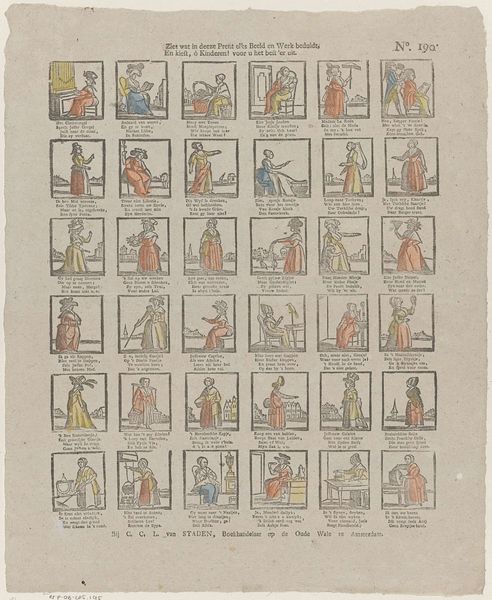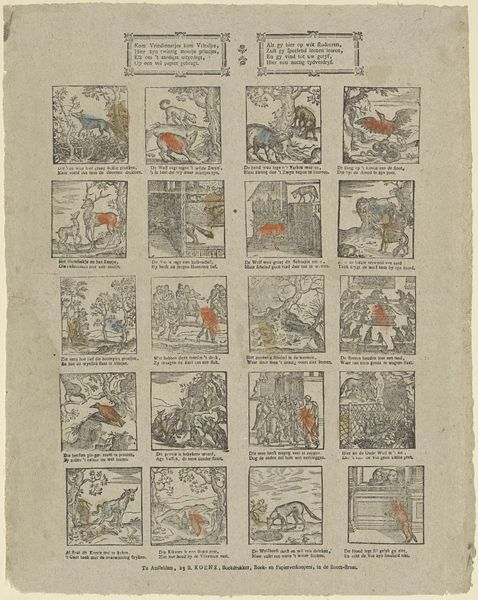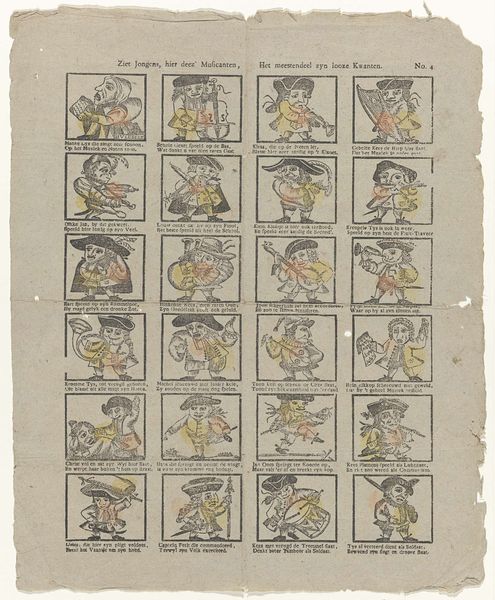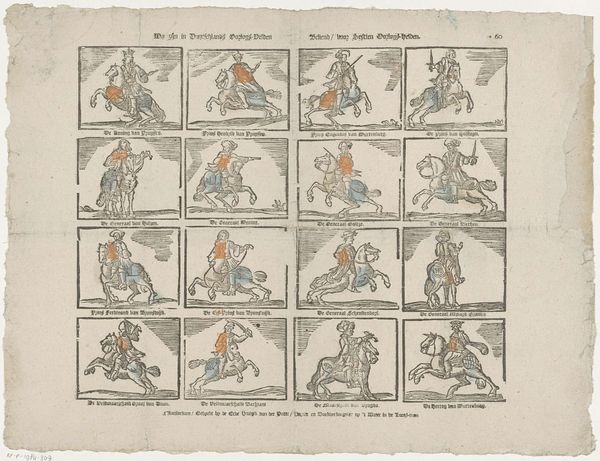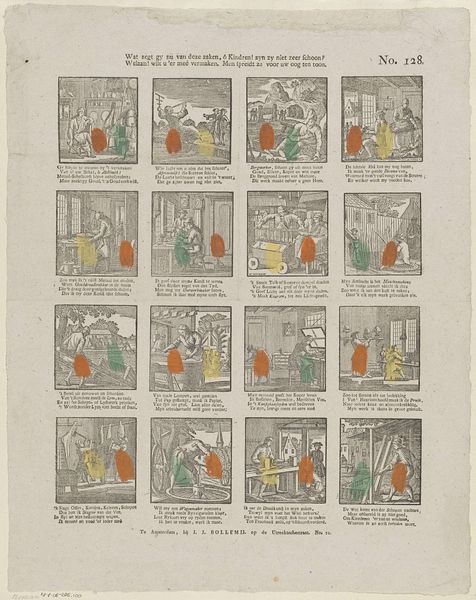
Afbeelding van oude gedrogte mannen en vrouwen, / Die van haren arbeid en ouderdom met gemak zitten te rusten 1806 - 1830
0:00
0:00
dirkvanlubeek
Rijksmuseum
print, engraving
#
dutch-golden-age
# print
#
caricature
#
genre-painting
#
history-painting
#
engraving
Dimensions: height 385 mm, width 332 mm
Copyright: Rijks Museum: Open Domain
Curator: Here at the Rijksmuseum, we have a fascinating print by Dirk van Lubeek, made between 1806 and 1830. Its lengthy title translates to "Image of old worn-out men and women, who sit resting easily from their labour and old age." Editor: Well, “easily” is debatable. Looking at these little characters all lined up in their boxes, there's a quiet sort of melancholy that sinks in. Like looking at faded postcards from lives already lived. Curator: It's an engraving, a series of small portraits presented in a grid. This allows van Lubeek to explore different types of aging bodies and the societal expectations surrounding aging. Note the stark visual of physical decline. Editor: It reminds me of those antique samplers, a catalog of human experiences all stitched together. But less quaint, more like a reminder that time leaves its mark, even—maybe especially—on the 'easily' resting. Is it me or the woman with the outrageous floral hat just stealing the show? I just love it when artists add those unexpected, sometimes absurdist, moments! Curator: Precisely. While seemingly genre scenes, each portrait raises questions about the invisibility of the elderly and the labour they've performed, which certainly has a relevant context to debates within contemporary welfare programs and care ethics. It offers both historical commentary and a rather grim acknowledgement about the impact of labor on the human body. Editor: Yeah, it makes me wonder if future generations will look back at *us* with similar feelings. Or maybe they’ll just have robot companions and download wisdom directly. Less charming, probably. Anyway, this has that quiet sting of truth about it, doesn’t it? Comfort and rest, shadowed by a life that seems to recede further and further into the past. Curator: It’s definitely a thought-provoking work, one that uses its seemingly simple form to address broader cultural anxieties about mortality and social responsibility. Editor: It has been a grim treat. Thanks for pointing it out.
Comments
No comments
Be the first to comment and join the conversation on the ultimate creative platform.

